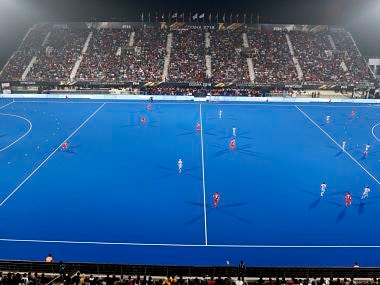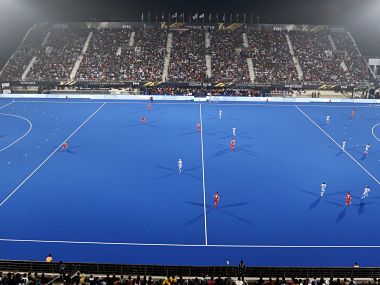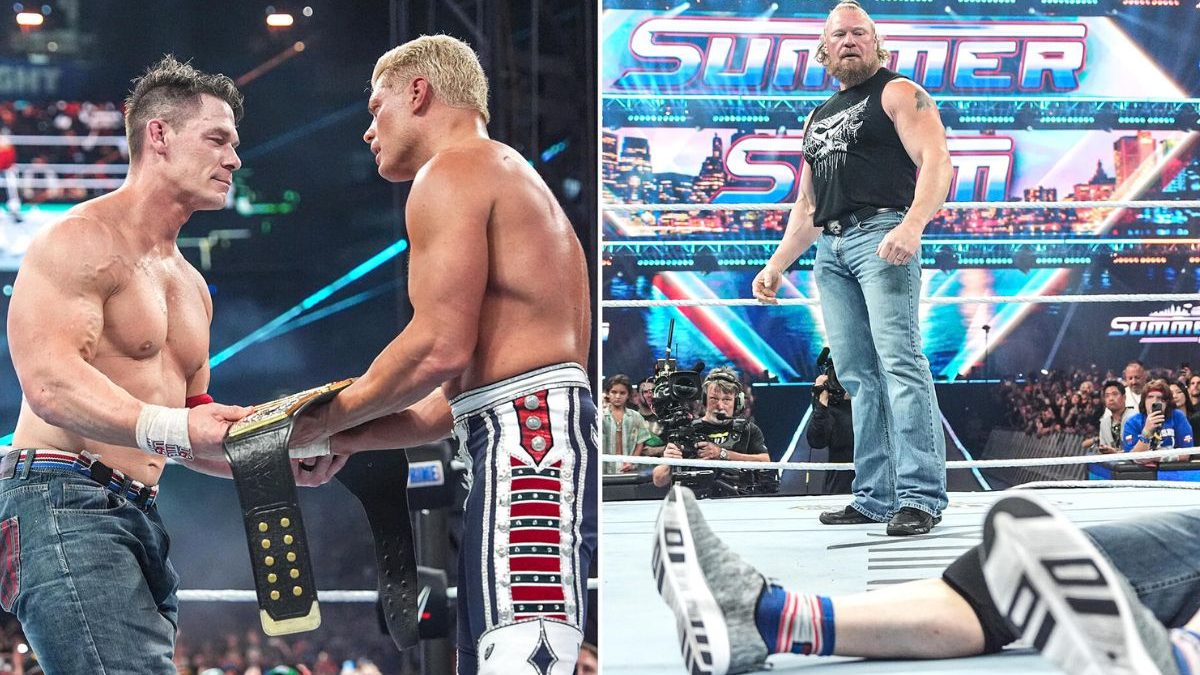On 2 November, Thierry Weil, the FIH’s chief executive officer, announced that the FIH was open to the idea of hockey once again being played on grass. If implemented, the decision will “allow far more countries to be a part of the Road to Paris,” he said. According to him, many countries had been alienated by the high maintenance costs of artificial playing surfaces. “Right now,” explained Weil, “a lot of countries are not being able to play because of lack of surfaces, but we can be a lot more inclusive if we allow it.” Categorically, he concluded: “Any country in the world that’s willing to participate in it on a turf of their choice … be it in Latin America, Africa, Asia … if four or five countries decide to play on a turf of their choice, FIH will have no problem with it. That’s the vision.” [caption id=“attachment_5704201” align=“alignleft” width=“380”]  Will hockey’s playing surfaces flip over to grass?[/caption] This significant policy shift is belated acknowledgement that expensive artificial surfaces proved beyond the reach of poor countries, and, thus, it is a step in creating an equal opportunity model. If tennis’ four major tournaments – Wimbledon and the French, U.S. and Australian Opens – can be played on three surfaces – grass, clay, hard court– why can’t hockey be played on more than one? Sport thrives on mystery and flair, because humans tire of more the same. Apart from addressing the issue of costs, FIH may be trying to play a guess game, introducing another dimension to hockey, and drawing in new fans. When the FIH introduced artificial playing surfaces at the 1976 Montreal Olympics, the Indian media wrote something like this: “This is a European conspiracy against Asia; power will trump skill, and the new surface will kill Asian hockey.” India’s (and to some extent, Pakistan’s) slump in form immediately after Montreal did not appear to be a co- incidence. But the FIH simply brushed the issue under the carpet, pacifying dissent by simply doing nothing. Indian hockey’s sudden free fall, beginning in 1976, has been discussed in detail. But it is worth again asking the old questions, because we never ever got conclusive answers to them. Is there a correlation between the change in surface and India’s slump? Statistically, it would appear not. India’s stranglehold on the Olympics gold medal had slowly loosened from the 1960 Rome Olympics (India lost the final to Pakistan), 16 years before the introduction of artificial surfaces. In fact, India’s decline had begun right after the 1948 London Olympics, when India was no longer able to impose itself by winning huge victories. Bronze medals at the Mexico City (1968) and Munich (1972) Olympics are further evidence of continuing decline. India has little to show after artificial surfaces were introduced. It has been a frustrating wait since 1975 to even make the Olympics or World Cup semi finals. But the world salivates in hope that India’s fortunes can turn around, because everybody loves to love Indian hockey. Actually, the motives are far from altruistic. The FIH wants India, the country that provides the bulk of the sport’s revenue, to do well. Leandro Negre, the then president of the FIH, had said so publicly. So, is it India’s hidden hand that has brought about the policy change? It is hard to say. With this decision, it is worth revisiting old arguments for clarity on the new approach. The problem is that information is lacking. From the public domain we don’t know how the Indian Hockey Federation dealt with the introduction of artificial surfaces. Did India protest? Minhaz Merchant writes in The Times of India: “For the first time (at the 1976 Montreal Olympics) since it began playing hockey in the 1928 Games in Amsterdam, India did not win even a bronze medal. The Indian Hockey Federation (IHF) should have objected. Whether through collusion or apathy, it did not. All Olympic Games henceforth were played on hard astroturf.” Merchant provides no information on what the Indian federation actually did. Former Indian player AB Subbaiah denies that artificial surfaces led to India’s decline. Former Pakistani players like Hassan Sardar and Islahuddin Siddiqui do the same. At the 2017 Asia Cup in Dhaka, Hassan Sardar was swift to point out to me that Pakistan had won gold medals in the Olympics (1984) and World Cup (1994), when artificial surfaces were used. Here at Bhubaneswar, Islahuddin Siddiqui tells me: “The European didn’t get better. We got worse. I am not blaming (the) artificial turf.” After the recent improvement in India’s play, whatever criticism there was of artificial surfaces has largely disappeared. The more likely reasons for India’s decline are poor management, refusal to learn and evolve, bravado, false pride, and lack of strategic thinking. There is enough information on these aspects, but very few courageously uphold that complaining about surfaces is evasion, and lack of grace. To some extent, facts on the ground kill the debate. By installing over 200 artificial pitches, India seems to have reconciled to their continuing use. Artificial surfaces are here to stay, says Narinder Batra, president of the FIH. The economic argument he provides is compelling, broadcasters demand minimal disruption of schedules for prime- time viewing. “Artificial surfaces were an excuse for India’s failure,” Leandro Negre, the former FIH president, tells me. Tayyab Ikram, the chief executive officer of the Asian Hockey Federation, says hockey will be out of the Olympics if it reverts to natural grass. Reversal to natural grass would be a step back, says Marijke Fleuren, president of the European Hockey Federation. Sigfried Aikman, the Dutch head coach of the Japanese men’s team tells me at the World Cup: “No I don’t think so (that artificial surfaces led to India’s decline). It’s a terrible excuse.” Yet, not everybody thinks that artificial surfaces are good for the sport. Juan Pablo, the manager of the Argentine team at the World Cup, and a former national player, tells me: “Artificial surfaces helped Europeans. You need money. It is very expensive for poor countries. Because of the characteristic of playing of Indian and Pakistani players, it helped Europeans.” Not just India, but “Argentine hockey changed a lot (after artificial surfaces were introduced). A good artificial pitch is very expensive. Most clubs (in Argentina) had sand artificial pitches, which is cheaper. We don’t put water but (put) sand on the pitch. There are only 20 to 30 artificial pitches in Argentina now.” Even in a rich country like New Zealand, the cost of artificial surfaces drove rural communities in the Hawkes Bay region away from hockey. Marcus Agnew writes in Hawke’s Bay Today: “In the old days it was very strong in those communities, but with the advent of artificial surfaces, it meant hockey died in those places without a turf, which were only in the big centres or the wealthy schools - unfortunate for hockey, as ironically so much of the natural talent lies in the rural settings.” But the argument of cost has a flip side. Hargurnik Singh Sandhu, a former Canadian men’s team member, and coach of the junior men’s team, told me once that a developed country like Canada finds natural grass pitches expensive. Due to harsh climatic conditions in Canada, it is cheaper to hire artificial playing fields for tournaments, than maintaining natural grass pitches. Aikman says the same of the Netherlands. So, the debate goes on, the FIH’s decision-making continues to evolve, the European domination of hockey remains, and, without the research, the range of opinions is just that. For now, there is no plan to play the elite tournaments on grass, but Weil’s announcement might be an indicator for the future. If India is the new joker in the pack, we have to also remember that power in the international system of hockey shifts ever so gradually, and decisions are slow to flip over. For the full Hockey World Cup 2018 schedule, click here
For all the results from the Hockey World Cup 2018, click here
For the Hockey World Cup 2018 standings, click here To read stories from our Hockey World Cup memories series, click here To read legends' take on Indian hockey team's performances at the World Cup, click here To read stories from The Hockey Insider series, click here Jitendra Nath Misra is a former ambassador. He advises the Department of Sports and Youth Services, Government of Odisha, on Sports, and teaches at Jamia Millia Islamia.


)

)
)
)
)
)
)
)
)



